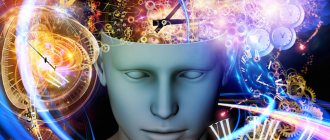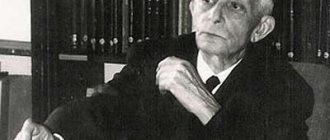Updated July 23, 2021 512 Author: Dmitry Petrov
Hello, dear readers of the KtoNaNovenkogo.ru blog. The term adaptation is used in various fields (biology, psychology, sociology, etc.).
It is very multifaceted and therefore raises a number of questions, including the main one - what is it all about.
Today we will talk about adaptation, its types, areas of application of the term and the meaning of adaptation in the processes of natural selection.
Concept and essence
In psychology, “adaptation” is a complex multifactorial process, as a result of which a person gets used to new conditions and becomes part of society. All people go through it, in one or another life situation.
Primary adaptation in a children's group, adaptation to social institutions, professional adaptation - each stage takes a person to a new stage of development.
Successful adaptation is important for improving the quality of life. A person acquires new skills and adapts to new, increasingly complex conditions. The ability to quickly assimilate requirements and comply with them determines how others will treat a person. Will he be respected in the team, will his opinion be listened to? The skill of quick adaptation helps a person take a leadership position.
Physiology of adaptation
The word adaptation comes from the Latin adaptacio - adaptation. The entire life of a person, both healthy and sick, is accompanied by adaptation. Adaptation takes place to the change of day and night, seasons, changes in atmospheric pressure, physical activity, long flights, new conditions when changing place of residence..
In 1975, at a symposium in Moscow, the following formulation was adopted: physiological adaptation is the process of achieving stability in the level of activity of control mechanisms of functional systems, organs and tissues, which ensures the possibility of long-term active life of the animal and human body in altered conditions of existence and the ability to reproduce healthy offspring .
The entire sum of various effects on the human and animal body is usually divided into two categories. Extreme factors are incompatible with life; adaptation to them is impossible. In conditions of extreme factors, life is possible only if there are special means of life support. For example, flight into space is possible only in special spacecraft, which maintain the required pressure, temperature, etc. Man cannot adapt to the conditions of space. Subextreme factors - life under the influence of these factors is possible due to the restructuring of the physiologically adaptive mechanisms that the organism itself has. With excessive strength and duration of action of the stimulus, a subextreme factor can turn into an extreme one.
The process of adaptation at all times of human existence plays a decisive role in the preservation of humanity and the development of civilization. Adaptation to lack of food and water, cold and heat, physical and intellectual stress, social adaptation to each other and, finally, adaptation to hopeless stressful situations, which runs like a red thread through the life of every person.
There is genotypic adaptation as a result when, on the basis of hereditary mutations and natural selection, the formation of modern species of animals and plants occurs. Genotypic adaptation has become the basis of evolution because its achievements are fixed genetically and are inherited.
The complex of species-specific hereditary characteristics—the genotype—becomes the point of the next stage of adaptation acquired in the process of individual life. This individual or phenotypic adaptation is formed during the interaction of an individual with the environment and is ensured by deep structural changes in the organism.
Phenotypic adaptation can be defined as a process that develops during an individual’s life, as a result of which the organism acquires previously absent resistance to a certain environmental factor and thus gains the opportunity to live in conditions previously incompatible with life and solve problems previously insoluble.
At the first meeting with a new environmental factor, the body does not have a ready-made, fully formed mechanism that ensures modern adaptation. There are only genetically determined prerequisites for the formation of such a mechanism. If the factor does not act, the mechanism remains unformed. In other words, the genetic program of an organism does not provide for a pre-formed adaptation, but the possibility of its implementation under the influence of the environment. This ensures the implementation of only those adaptive reactions that are vitally necessary. In accordance with this, the fact that the results of phenotypic adaptation are not inherited should be considered beneficial for the conservation of the species.
In a rapidly changing environment, the next generation of each species risks encountering completely new conditions, which will require not the specialized reactions of ancestors, but the potential, remaining, for the time being, untapped opportunity to adapt to a wide range of factors.
Urgent adaptation is the body's immediate response to the action of an external factor, carried out by avoiding the factor (avoidance) or by mobilizing functions that allow it to exist despite the action of the factor.
Long-term adaptation - a gradually developing factor response ensures the implementation of reactions that were previously impossible and existence in conditions that were previously incompatible with life.
The development of adaptation occurs through a number of phases.
1. Initial phase of adaptation - develops at the very beginning of the action of both physiological and pathogenic factors. First of all, under the influence of any factor, an indicative reflex arises, which is accompanied by inhibition of many types of activities that manifest themselves up to this moment. After inhibition, an excitation reaction is observed. Excitation of the central nervous system is accompanied by increased function of the endocrine system, especially the adrenal medulla. At the same time, the functions of blood circulation, respiration, and catabolic reactions are enhanced. However, all processes occur in this phase uncoordinated, insufficiently synchronized, uneconomical and are characterized by urgent reactions. The stronger the factors acting on the body, the more pronounced this adaptation phase is. Characteristic of the initial phase is the emotional component, and the strength of the emotional component determines the “triggering” of autonomic mechanisms that are ahead of somatic ones.
2. Phase - transitional from initial to stable adaptation. It is characterized by a decrease in the excitability of the central nervous system, a decrease in the intensity of hormonal changes, and the shutdown of a number of organs and systems initially included in the reaction. During this phase, the body's adaptive mechanisms seem to gradually switch to a deeper, tissue level. This phase and the processes accompanying it are relatively little studied.
3. Sustainable adaptation phase . It is actually an adaptation - an adaptation and is characterized by a new level of activity of tissue, membrane, cellular elements, organs and systems of the body, rebuilt under the cover of auxiliary systems. These shifts provide a new level of homeostasis, an adequate organism to other unfavorable factors - the so-called cross-adaptation develops. Switching the body’s reactivity to a new level of functioning is not given to the body “for free”, but occurs with tension in the control and other systems. This tension is usually called the cost of adaptation. Any activity of an adapted organism costs it much more than under normal conditions. For example, physical activity in mountainous conditions requires 25% more energy.
Since the phase of stable adaptation is associated with constant tension of physiological mechanisms, functional reserves in many cases can be depleted, the most depleted link being hormonal mechanisms.
Due to the depletion of physiological reserves and disruption of the interaction of neurohormonal and metabolic mechanisms of adaptation, a condition arises that is called maladaptation . The disadaptation phase is characterized by the same shifts that are observed in the initial adaptation phase - again, auxiliary systems - breathing and blood circulation - come into a state of increased activity, energy in the body is wasted uneconomically. Most often, maladaptation occurs in cases where functional activity in new conditions is excessive or the effect of adaptogenic factors increases and their strength approaches extreme ones.
If the factor that caused the adaptation process ceases, the body gradually begins to lose the acquired adaptations. With repeated exposure to a subextreme factor, the body's ability to adapt can be increased and adaptive shifts can be more perfect. Thus, we can say that adaptation mechanisms have the ability to train and therefore the intermittent action of adaptogenic factors is more favorable and determines the most stable adaptation.
The key link in the mechanism of phenotypic adaptation is the relationship between function and genotypic apparatus that exists in cells. Through this relationship, the functional load caused by the action of environmental factors, as well as the direct influence of hormones and mediators, lead to an increase in the synthesis of nucleic acids and proteins and, as a consequence, to the formation of a structural trace in the systems specifically responsible for the adaptation of the body to this particular environmental factor. In this case, the mass of membrane structures responsible for the cell’s perception of control signals, ion transport, energy supply, i.e., increases to the greatest extent. precisely those structures that imitate the function of the cell as a whole. The resulting system trace is a complex of structural changes that ensure the expansion of the link that imitates the function of cells and thereby increases the physiological power of the dominant functional system responsible for adaptation.
After the cessation of the effect of this environmental factor on the body, the activity of the genetic apparatus in the cells responsible for the adaptation of the system decreases quite sharply and the systemic structural trace disappears.
Stress.
When exposed to extreme or pathological stimuli leading to tension in the adaptation mechanisms, a condition called stress occurs.
The term stress was introduced into medical literature in 1936 by Hans Selye, who defined stress as a state of the body that occurs when any demands are placed on it. Various stimuli give stress their own characteristics due to the emergence of specific reactions to qualitatively different influences.
There are successively developing stages in the development of stress.
1. Reaction of anxiety, mobilization . This is an emergency phase, which is characterized by disruption of homeostasis, increased processes of tissue breakdown (catabolism). This is evidenced by a decrease in total weight, a reduction in fat depots, and a decrease in certain organs and tissues (muscle, thymus, etc.). Such a generalized mobile adaptive reaction is not economical, but only emergency.
The products of tissue breakdown apparently become building materials for the synthesis of new substances necessary for the formation of general nonspecific resistance to a damaging agent.
2. Resistance stage . It is characterized by the restoration and strengthening of anabolic processes aimed at the formation of organic substances. An increase in the level of resistance is observed not only to this irritant, but also to any other. This phenomenon, as already indicated, is called
cross resistance.
3. Stage of exhaustion with a sharp increase in tissue breakdown. With excessively strong impacts, the first emergency stage can immediately go into the depletion stage.
Later works by Selye (1979) and his followers established that the mechanism of stress response is triggered in the hypothalamus under the influence of nerve impulses coming from the cerebral cortex, reticular formation, and limbic system. The hypothalamus-pituitary-adrenal cortex system is activated and the sympathetic nervous system is excited. The greatest role in the implementation of stress is taken by corticoliberin, ACTH, HST, corticosteroids, and adrenaline.
Hormones, as is known, play a leading role in the regulation of enzyme activity. This is important under stress conditions when there is a need to change the quality of an enzyme or increase its quantity, i.e. in adaptive changes in metabolism. It has been established, for example, that corticosteroids can influence all stages of the synthesis and breakdown of enzymes, thereby providing “tuning” of the body’s metabolic processes.
The main direction of action of these hormones is the urgent mobilization of the body’s energy and functional reserves, and there is a directed transfer of the body’s energy and structural reserves to the dominant functional system responsible for adaptation, where a systemic structural trace is formed. At the same time, the stress reaction, on the one hand, potentiates the formation of a new systemic structural trace and the formation of adaptation, and on the other, due to its catabolic effect, it contributes to the “erasure” of old structural traces that have lost their biological significance - therefore, this reaction is a necessary link in the integral mechanism adaptation of the organism in a changing environment (reprograms the adaptive capabilities of the organism to solve new problems).
Biological rhythms.
Fluctuations in the change and intensity of processes and physiological reactions, which are based on changes in the metabolism of biological systems, caused by the influence of external and internal factors. External factors include changes in illumination, temperature, magnetic field, intensity of cosmic radiation, seasonal and solar-lunar influences. Internal factors are neuro-humoral processes that occur in a certain, hereditarily fixed rhythm and pace. The frequency of biorhythms ranges from a few seconds to several years.
Biological rhythms caused by internal factors of changes in activity with a period of 20 to 28 hours are called circadian or circadian. If the period of rhythms coincides with the periods of geophysical cycles, and is also close or multiple to them, they are called adaptive or ecological. These include diurnal, tidal, lunar and seasonal rhythms. If the period of the rhythms does not coincide with periodic changes in geophysical factors, they are designated as functional (for example, the rhythm of heart contractions, breathing, cycles of motor activity - walking).
Based on the degree of dependence on external periodic processes, exogenous (acquired) rhythms and endogenous (habitual) rhythms are distinguished.
Exogenous rhythms are caused by changes in environmental factors and can disappear under certain conditions (for example, suspended animation when the external temperature decreases). Acquired rhythms arise in the process of individual development as a conditioned reflex and persist for a certain time under constant conditions (for example, changes in muscle performance at certain hours of the day).
Endogenous rhythms are innate, preserved under constant environmental conditions and are inherited (these include most functional and circadian rhythms).
The human body is characterized by an increase in the daytime and a decrease in the night hours of physiological functions that ensure its physiological activity of heart rate, minute blood volume, blood pressure, body temperature, oxygen consumption, blood sugar, physical and mental performance, etc.
Under the influence of factors that change with daily frequency, external coordination of circadian rhythms occurs. The primary synchronizer in animals and plants is, as a rule, sunlight; in humans it is also social factors.
The dynamics of circadian rhythms in humans are determined not only by innate mechanisms, but also by the daily pattern of activity developed during life. According to most researchers, the regulation of physiological rhythms in higher animals and humans is carried out mainly by the hypothalamic-pituitary system.
Adaptation to long flight conditions
In conditions of long flights and trips when crossing many time zones, the human body is forced to adapt to the new cycle of day and night. The body receives information about the intersection of time zones due to influences also associated with changes in the influence of both the magnetic and electric fields of the Earth.
Disorder in the system of interaction of biorhythms characterizing the course of various physiological processes in the organs and systems of the body is called desynchronosis. With desynchronosis, complaints of poor sleep, decreased appetite, irritability are typical, there is a decrease in performance and a phase mismatch with time sensors of contraction frequency, respiration, blood pressure, body temperature and other functions, the reactivity of the body changes. This condition has a significant adverse effect on the adaptation process.
The leading role in the process of adaptation in the conditions of the formation of new biorhythms is the function of the central nervous system. At the subcellular level in the central nervous system, destruction of mitochondria and other structures is noted.
At the same time, regeneration processes develop in the central nervous system, which ensure restoration of function and structure by 12-15 days after the flight. The restructuring of the central nervous system function when adapting to changes in daily periods is accompanied by a restructuring of the functions of the endocrine glands (pituitary gland, adrenal glands, thyroid gland). This leads to changes in the dynamics of body temperature, the intensity of metabolism and energy, and the activity of systems, organs and tissues. The dynamics of the restructuring are such that if in the initial stage of adaptation these indicators are reduced during the daytime hours, then upon reaching a stable phase they move in accordance with the rhythm of day and night. In space conditions, habitual biorhythms are also disrupted and new biorhythms are formed. Various functions of the body are rebuilt to a new rhythm at different times: the dynamics of higher cortical functions within 1-2 days, heart rate and body temperature within 5-7 days, mental performance within 3-10 days. The new or partially changed rhythm remains fragile and can be destroyed quite quickly.
Adaptation to low temperature.
The conditions under which the body must adapt to cold may vary. One of the possible options for such conditions is working in cold shops or refrigerators. In this case, the cold acts intermittently. In connection with the accelerated pace of development of the Far North, the issue of adapting the human body to life in northern latitudes, where it is exposed not only to low temperatures, but also to changes in light conditions and radiation levels, is currently becoming relevant.
Cold adaptation is accompanied by major changes in the body. First of all, the cardiovascular system reacts to a decrease in ambient temperature by restructuring its activity: systolic output and heart rate increase. A spasm of peripheral vessels is observed, as a result of which the skin temperature decreases. This leads to a decrease in heat transfer. As adaptation to the cold factor changes in skin blood circulation become less pronounced, therefore, in acclimatized people, the skin temperature is 2-3″ higher than in non-acclimatized people. In addition, at
they observe a decrease in the temperature analyzer.
Reducing heat transfer during cold exposure is achieved by reducing moisture loss through breathing. Changes in vital capacity and diffusion capacity of the lungs are accompanied by an increase in the number of red blood cells and hemoglobin in the blood, i.e. an increase in oxygen capacity - everything is mobilized to sufficiently supply the body’s tissues with oxygen in conditions of increased metabolic activity.
Since, along with a decrease in heat loss, oxidative metabolism increases - the so-called chemical thermoregulation, in the first days of stay in the North, the basal metabolism increases, according to some authors, by 43% (subsequently, as adaptation is achieved, the basal metabolism decreases almost to normal).
It has been established that cooling causes a tension reaction - stress. The hormones of the pituitary gland (ACTH, TSH) and adrenal glands are primarily involved in its implementation. Catecholamines have a calorigenic effect due to the catabolic effect, glucocorticoids promote the synthesis of oxidative enzymes, thereby increasing heat production. Thyroxine ensures an increase in heat production, and also potentiates the calorigenic effect of norepinephrine and adrenaline, activates the mitochondrial system - the main energy stations of the cell, and uncouples oxidation and phosphorylation.
Stable adaptation is achieved due to the restructuring of RNA metabolism in neurons and neuroglia of the hypothalamic nuclei; lipid metabolism is intensified, which is beneficial for the body to intensify energy processes. People living in the North have increased levels of fatty acids in the blood, and glucose levels are slightly
decreases.
The formation of adaptation in northern latitudes is often associated with certain symptoms: shortness of breath, fatigue, hypoxic phenomena, etc. These symptoms are a manifestation of the so-called “polar tension syndrome.”
In some people in the North, the defense mechanisms and adaptive restructuring of the body can lead to a breakdown - disadaptation. In this case, a number of pathological symptoms called polar disease appear.
Human adaptation to the conditions of civilization
The factors that cause adaptation are largely common to animals and humans. However, the process of adaptation of animals is, in essence, mainly physiological in nature, while for humans the process of adaptation is closely connected, moreover, with the social aspects of his life and his personality qualities.
A person has at his disposal a variety of protective (protective) means that civilization gives him - clothing, houses with an artificial climate, etc., which free the body from the load on some adaptive systems. On the other hand, under the influence of protective technical and other measures in the human body, physical inactivity occurs in the activity of various systems and the person loses fitness and trainability. Adaptive mechanisms are detrained and become inactive - as a result, there is a decrease in the body's resistance.
Increasing overload with various types of information, production processes that require increased mental stress, are characteristic of people employed in any sector of the national economy. Factors that cause mental stress come to the fore among the numerous conditions that require adaptation of the human body. Along with factors that require the activation of physiological mechanisms of adaptation, purely social factors operate - relationships in a team, subordinate relationships, etc.
Emotions accompany a person when changing place and living conditions, during physical exertion and overexertion, and, conversely, when forced restriction of movements.
The reaction to emotional stress is nonspecific; it was developed during evolution and at the same time serves as an important link that “launches” the entire neurohumoral system of adaptation mechanisms. Adaptation to the effects of psychogenic factors proceeds differently in individuals with different types of GNI. In extreme types (cholerics and melancholics), such adaptation is often unstable; sooner or later, factors affecting the psyche can lead to a breakdown in the IRR and the development of neuroses.
Adaptation to information deficiency
Partial loss of information, for example, turning off one of the analyzers or artificially depriving a person of one of the types of external information leads to adaptive shifts of the type of compensation. Thus, in the blind, tactile and auditory sensitivity is activated.
Relatively complete isolation of a person from any irritation leads to disruption of sleep patterns, the appearance of visual and auditory hallucinations and other mental disorders that can become irreversible. Adaptation to complete deprivation of information is impossible.
History of discovery and study
Not only people, but also animals have the ability to adapt. Therefore, the issue of studying it was first taken up not by psychologists, but by biologists. Charles Darwin's concept partially explained the problem of the adaptation mechanism: the scientist considered it as a means of survival, formed historically.
In domestic science, I. Sechenov and I. Pavlov studied adaptation. In his theory of the unity of the organism and the environment, Sechenov first presented adaptation as a process inherent in all animals. He considered only the physiological side of the process.
The first scientist who tried to reveal the workings of the mechanism of social adaptation was M. Yaroshevsky. He relied on the results of research by foreign psychologists who identified patterns in the behavior of individuals within one group.
After analyzing several groups of subjects, Yaroshevsky suggested that the essence of adaptation is the transfer of group values to the individual. This idea was later developed by L. Vygotsky. He revealed that the influence of a group on an individual is equivalent to the influence of an individual on a group. This process is important for the development of the individual and society as a whole.
Forms of manifestations
The main, longest and most complex adaptation is considered to be adaptability to a new social environment and changed social conditions. This is an active form of personality development, within which the mutual influence of a person and the environment is felt.
An important manifestation of such adaptation is the nature of the interaction, which includes communicative nuances, between the individual and the people around him. Successful adaptation to changed conditions means the individual’s ability to function in a new social environment.
The adaptation mechanism at the psychological level can take on various forms and manifestations. This is determined by the personal emotional and physiological characteristics of a person. Adaptation is manifested by changes in attitudes and behavioral reactions to situational stimuli.
Classification and levels
Adaptation occurs simultaneously at 3 levels:
- physiological;
- social;
- psychological.
At the physical level, a person adapts to environmental changes: climate, man-made factors, and the results of various types of activities.
Social adaptation - getting used to the social environment: study, work, surrounding culture. Adaptation can be passive, when a person simply submits to the prevailing conditions and does not try to choose a more convenient option.
More opportunities are provided by active adaptation, in which the individual decides which environment he will adapt to. For example, move to another city, where there is a better chance of finding good conditions for professional development.
Psychological adaptation is an important criterion that affects interpersonal communication and professional development. A person quickly switches between different areas of activity, chooses a social role, a model of behavior.
There are also levels of changes that affect all functioning systems of the body: physiological and psychological.
At the physiological level, compensatory systems are activated, which ensure an adequate response of the body to extreme conditions. First of all, this is a mechanism of neurohumoral regulation that triggers the release of stress hormones by the adrenal glands.
This is followed by the release of neurotransmitters (“joy hormones”) that make it easier to cope with a stressful moment. After this, the cardiovascular, respiratory and excretory systems are connected. They are responsible for overcoming stress.
The psychological level is the stage of mental restructuring. A person develops new stable neural connections (conditioned reflexes or dynamic stereotypes). Thanks to these connections, the stability, intensity and consistency of behavioral reactions are regulated.
When faced with a difficult situation, an individual uses a set of reflexes to correctly respond to external changes. Depending on the characteristics of mental development, a person chooses a positive or negative reaction.
A positive mental response is a constructive solution aimed at overcoming an obstacle. Negative reactions - anger, negativism, refusal, regression.
Manifestations and methods of adaptation
The main and most difficult type of adaptation for a person is social adaptation. This is an active development in which the environment influences the person, and the person influences the environment. L. Vygotsky called this process the merging of active and passive social roles.
Psychological adaptation of an individual to a group occurs in 3 ways:
- self-change, in accordance with the requirements of the group;
- changing individual characteristics of the group in accordance with personal needs;
- self-isolation using psychological protection methods, gradual entry into the group.
In the first method of adaptation, psychologists study personality traits that regulate the speed and success of an individual’s adaptation to the conditions of existence in a group. These qualities include physiological (type of nervous system) and psychological (type of temperament).
The group in this case is considered as a background to which the personality adapts. At the same time, it does not influence the individual himself; he changes his behavior independently.
The second approach considers the role of the group in the process of personal adaptation. The decisive moment is the initial mood of the group towards the newcomer: friendly, neutral, wary.
For the third approach, a two-way process is of interest: the interaction of the individual and the group. More often, at the initial stage of rapprochement, the individual interacts not with the entire group, but with one of the subgroups, which includes several loyal people. Such subgroups are formed shortly after the formation of the group; they are characterized by relative stability.
Once in a small subgroup, an individual communicates and learns the rules of behavior in the group.
Management methods
In psychology, adaptation is the process of bringing a person’s emotional reactions and mental activity into line with social standards and the requirements of the living environment. It can be controlled using special methods developed by leading industry experts.
Trial and error method
American psychologist and teacher Edward Lee Thorndike in 1898 proposed to manage the adaptation of an individual in a social environment or work group empirically, using a person’s innate abilities to sort out options for action.
The method consists in solving life problems using accumulated experience and simultaneously acquiring new ones in the process of overcoming difficulties. According to this theory, less time, effort and resources are spent on achieving each subsequent goal than on the previous one.
The technique has found wide application in the development of the adaptation mechanism of schoolchildren, students and other social groups. The advantage of this method is that it does not require learning. The ability to find solutions to a problem is inherent in every person from the very beginning.
Formation of behavioral reactions
This method provides for the development of a motivational component and a reward system that stimulates further improvement of the personal adaptation mechanism. This method of managing an individual’s adaptability was developed by a representative of the behaviorist psychological school, J. Watson.
He considered the “stimulus-response” system as a mechanism for the formation of new forms of behavior in a certain social environment. Watson categorically stated the decisive role of the influence of the environment on the development of a psychological type and behavior pattern.
Observational method
The theory put forward by the French psychologist and neuropsychiatrist Henri Vallon provides for managing adaptation by creating conditions convenient for observation and analysis.
According to the author, placing an individual in a new social environment forces him to subconsciously look closely at the behavior of others and unwittingly imitate it. This is how the individual integrates into the social group.
This type of adaptation is called latent-passive. In psychology, this is a common phenomenon characteristic of people of phlegmatic temperament. Most of the information received from the outside world, according to the author of the theory, is perceived at a subconscious level, which plays a key role in the development of generally accepted norms of behavior.
Factors
The causes of adaptation disorder are emotional and stress factors. They provoke the development of a negative emotional state in which a person is unable to adequately respond to changes in the environment. Such reasons include:
- emotional and psychological abuse;
- difficult life situation caused by sudden changes in external conditions;
- chronic central nervous system disorders;
- somatic diseases;
- prolonged increased mental stress;
- being in a situation of limited resources (lack of sleep, malnutrition).
At risk are people whose living conditions contribute to adaptation disorder: military personnel, medical workers, migrants, elderly people, students.
Treatment of the disease
Treatment of adjustment disorders requires the use of psychotherapy. It is recommended to conduct group therapy for patients who experience the same stress, for example, retirees or people with the same chronic illness. Individual psychotherapy is aimed at ensuring that a person begins to understand that the onset of the disease is observed under stress. This is the main cause of the pathology. If treatment methods are selected correctly, the patient gains strength and endurance with which to combat stress.
To avoid secondary gain, proper implementation of psychiatric decision is recommended. Treatment of the disease will be successful if the doctor has an attentive and caring attitude towards the patient. When symptoms of secondary gain appear, the treatment process becomes more complicated.
If anxiety-depressive disorders , then this requires drug therapy. Patients are recommended to take anti-anxiety medications and tricyclic agents, which help relieve depression.
With maladjustment, the patient may become overly aggressive, which leads to conflicts at work or school, committing crimes, etc. Doctors should not justify these actions of patients and try to justify them to law enforcement agencies. With this line of behavior of the doctor, the person’s emotional state does not improve. In addition, he does not criticize himself, and such socially unacceptable behavior becomes the norm for him.
Disadaptation is a dangerous pathological process that has a blurred clinical picture. That is why pathology is often diagnosed untimely. The choice of treatment method should be made by a doctor, which will ensure its effectiveness.
Diagnostics
An individual can be diagnosed with adjustment disorder based on the presence of symptoms:
- Asthenic - fatigue, increased irritability, sleep disturbance.
- Anxious - increased excitability, causeless anxiety, drowsiness, nausea, dizziness, loss of a sense of security.
- Depressive - predominance of decadent mood, decreased concentration, apathy.
- Behavioral reactions - indifference to the team, withdrawal into negative habits, a sharp change in the usual way of life.
- Inappropriate emotional reactions - increased level of aggression, sudden outbursts of anger, followed by apathy.
- Cognitive reactions - decreased speed of information processing, intellectual productivity.
- Vegetative syndrome - muscle spasms, a sharp decrease in blood pressure, sweating, rapid heartbeat.
In cases of severe adjustment disorder, a person experiences suicidal mood. This does not necessarily lead to a suicide attempt, but is often accompanied by self-harm: the person cuts himself.
Signs of pathology
Symptoms of adjustment disorder are not always pronounced and may differ in each individual case, which complicates the diagnosis process. The main symptoms are of an anxious and depressive nature. Maladjustment is accompanied by a feeling of inability to cope with the troubles that appear in life. With pathology, the patient becomes suspicious and irritable. Most people note the appearance of a feeling of internal tension. Psychiatry of adaptation disorder has information that it is accompanied by:
- Anxiety;
- Persistent anxiety;
- Internal discomfort;
- Violations in normal behavior.
In patients with pathology, the mood worsens. In especially severe cases, a sad state appears. A person becomes uninterested in his usual activities. A person becomes physically and mentally exhausted, so he cannot make informed decisions. He does not analyze the situation and is not responsible for the decisions made.
Disadaptation has a vague clinical picture, so when the first suspicious symptoms appear, it is recommended to seek help from a specialist who will correctly diagnose and prescribe effective treatment.
Types of disorders and methods of eliminating them
Violations are easier to notice by the inability of an individual to adapt to a group. Psychology and psychiatry, as related fields, use the same diagnostic criteria presented in the International Classification of Diseases:
- decreased attention and concentration;
- loss of the ability to do usual activities;
- obsessive thoughts, excessive preoccupation with the situation;
- loss of interest in work and hobbies;
- refusal of social contacts.
Tests, interviews, and psychometric studies are used as diagnostic tools. Based on the results, the patient is prescribed treatment. Psychotherapeutic methods and medications are most often used:
- Anxiolytics - Phenazepam and its analogues. They reduce anxiety, normalize sleep and digestion. They can be addictive, so they are used carefully, in small doses. If side effects occur, the drug is discontinued.
- Antidepressants - Fluoxetine, Paroxetine, Sertraline. Normalize the production of hormones, regulate the functioning of the nervous system. The drug is selected individually. When taking the medicine, the patient should keep an observation diary and note changes in his emotional state.
Professional psychotherapeutic methods of treatment - hypnotherapy, autogenic training, cognitive exercises.
To independently increase your ability to adapt, you need to choose techniques that increase stress resistance and activate the body’s compensatory capabilities. Automotive training, meditation, and yoga are most suitable for this. Exercises that relieve muscle tension affect vital activity, emotional state, and reduce the risk of developing maladjustment.








